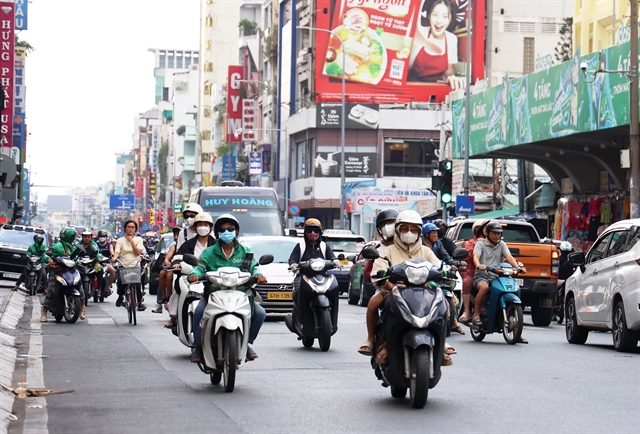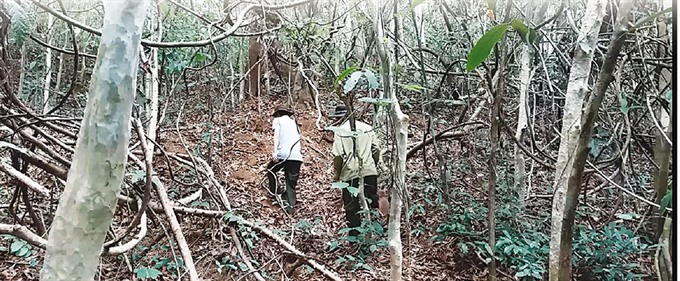 Environment
Environment

The number of gaurs living in Ja Book Valley has been declining over the last 20 years as the grasslands where they used to roam have slowly been replaced by forests.
 |
| People cross the forest to reach Ya Book Valley in Chư Mom Ray National Park in Kon Tum Province. The valley was known as the land of the gaur - the largest extant bovine and an endangered species in Việt Nam. — Photo thanhnien.vn |
KON TUM — The number of gaurs living in Ja Book Valley has been declining over the last 20 years as the grasslands where they used to roam have slowly been replaced by forests.
The grasslands used to cover 15,000ha in Chư Mom Ray National Park in the Central Highland province of Kon Tum, but they have shrunk to just 5ha.
Đào Xuân Thủy, vice director of the national park, said that Ja Book Valley used to be home to many animals including tigers, elephants, gaurs, leopards, deer, cobras, reptiles and amphibians.
“The valley used to be known as the land of the gaur - the largest extant bovine and an endangered species in Việt Nam - as herds of them used to roam the valley,” Thủy said.
Thủy added that following grazers, carnivores also flocked to the valley to hunt.
“The valley was most crowded in May because of the abundant grass,” he said, explaining that April rains revitalised the meadow that was burned during the dry season.
The rains also filled Sa Thầy River thus providing water to relieve the animals’ thirst, Thủy added.
Phan Thanh Đông, a forest ranger at Ya Book Forest Protection Station, said he had recently found footprints of animals at the valley.
“Big footprints belong to the gaur while the smaller ones are from deer, chamois and boar,” he said, excitedly showing a Thanh niên (Young People) newspaper reporter the fresh footprints.
“What a pity! We lost our chance to see them,” Đông said.
We used to have a camera trap to take pictures of the animals, but it was destroyed by a lightning strike, Đông said.
In 2009, the camera detected two families of gaur with five and seven animals.
In 2013, the park’s vice director Thủy said he found a dead gaur on a path in the forest.
Another gaur was found dead in 2017 after it was hit by a truck. The body has been preserved and put on display at the park’s exhibition centre. The park’s management board said the animal may have been on the road because it lost its herd and the habitat was disturbed by construction activities.
After the accident, the park’s staff increased patrols to limit human impacts like illegal logging and poaching on wildlife.
According to the management board, the park is now home to a herd of 10 gaurs, and experts are studying their movement to seek ways to protect them.
Falling numbers of grazers in Ya Book Valley also led to a drop in carnivores.
Thủy said that forest protection activities had been largely effective over the last 20 years, and there had been no forest fires, but that meant forests had been able to take root and taken over the grasslands.
Previously, during the dry season, trees and grass would burn naturally and the grass grew back more quickly.
“Now there is less grass so animals don’t return to the valley any more,” Thủy said.
He also said that experts had suggested controlled forest fires to secure a habitat for grazers, but current regulations did not allow it.
The gaur is native to the Indian subcontinent and Southeast Asia. It has been listed as ’Vulnerable’ on the International Union for Conservation of Nature’s Red List since 1986. The gaur’s habitat is largely confined to evergreen, semi-evergreen, and moist deciduous forests, and more importantly, relatively undisturbed forest regions.
Chư Mom Ray National Park covers over 56,000ha in the districts of Sa Thầy and Ngọc Hồi, about 30km to the northwest of Kon Tum City
Chu Mom Ray is the only national park in Việt Nam which shares borders with Laos and Cambodia. It has the highest biodiversity of all the country’s national parks. — VNS




